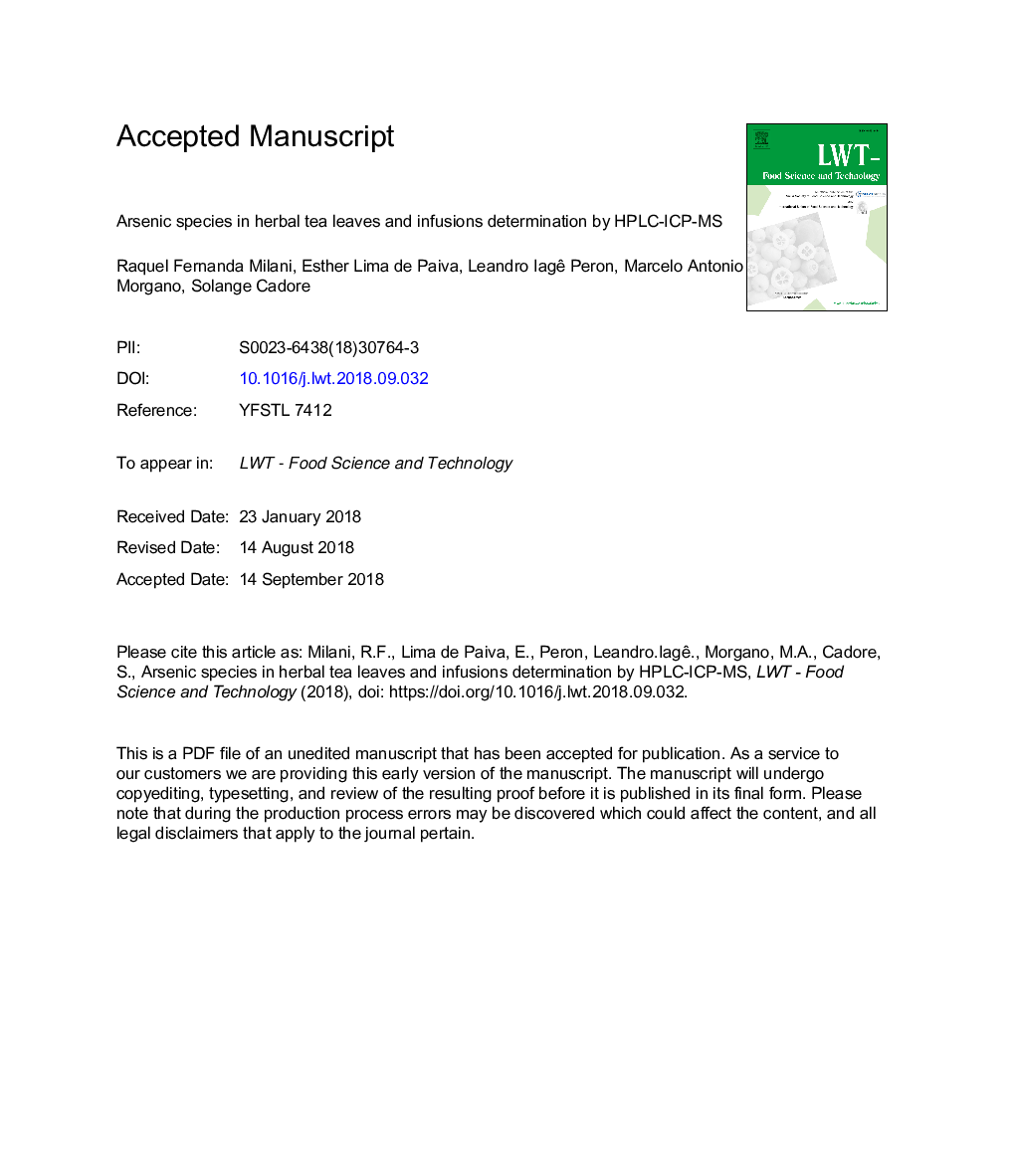| Article ID | Journal | Published Year | Pages | File Type |
|---|---|---|---|---|
| 11032608 | LWT - Food Science and Technology | 2018 | 31 Pages |
Abstract
A simple method for arsenic species As (III), As (V), monomethylarsonic acid (MMA) and dimethylarsonic acid (DMA) were investigated in 18 herbal tea leaves and their infusion by high performance liquid chromatography hyphenated with inductively coupled plasma mass spectrometry (HPLC-ICP-MS). The proposed method presented absence of interconversion between the arsenic species and high sensitivity, being limits of detection and quantification 11 and 38â¯Î¼gâ¯Lâ1 for herbal tea leaves and 0.20 and 0.66â¯Î¼gâ¯Lâ1 for their infusions, respectively. About 28% samples present total arsenic levels above Brazilian and MERCOSUR maximum limits (0.6â¯mgâ¯kgâ1). The estimative of exposure to inorganic arsenic was made taking into account the benchmark dose lower limit (BMDL05) considering the daily ingestion of one cup of herbal tea (200â¯mL) for adults (70â¯kg) and children (20â¯kg). Although this estimative demonstrates low exposure for adults (2.9% of BMDL05), for children, however, the daily consumption of a single cup of herbal tea can reach 10.3% of BMDL05 for inorganic arsenic.
Keywords
Related Topics
Life Sciences
Agricultural and Biological Sciences
Food Science
Authors
Raquel Fernanda Milani, Esther Lima de Paiva, Leandro Iagê Peron, Marcelo Antonio Morgano, Solange Cadore,
